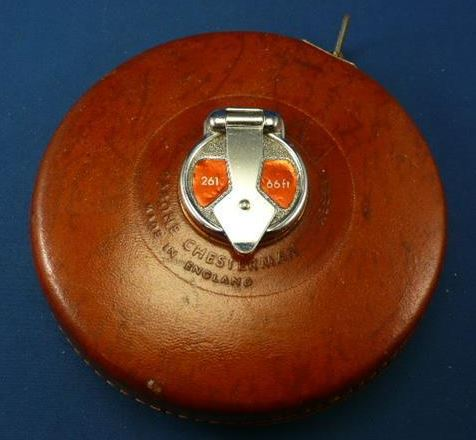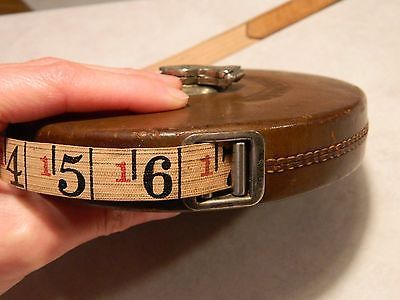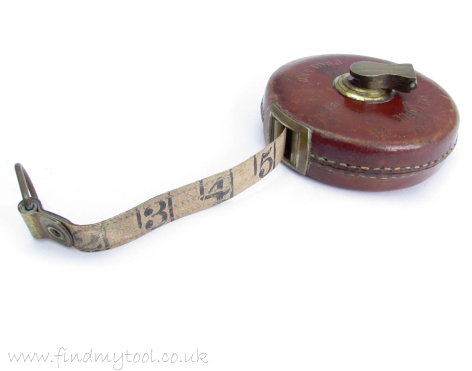When you think of essential tools, the tape measure might not be the first to come to mind. However, this humble tool has a fascinating history, with origins that date back to a unique need for repurposing materials. From its inception as a practical way to use leftover wire from the hoop skirt industry, the tape measure has become an indispensable part of toolboxes worldwide. Let’s explore the evolution of the tape measure and how it transformed into the tool we rely on today.
The Birth of the Tape Measure: James Chesterman’s Ingenious Invention

The tape measure owes its origin to an Englishman named James Chesterman. In 1829, Chesterman held one of the first known patents for a retractable measuring tool. During the hoop skirt craze, he manufactured steel wire for these skirts, but as the trend faded, Chesterman was left with an overabundance of flat metal wire. With a sharp mind and entrepreneurial spirit, he sought a new use for this material. His solution? A “measuring chain,” the earliest form of the modern tape measure.
Chesterman’s initial design featured flat steel wire, marked with measurements to create a lightweight, portable alternative to the measuring chains of the time. It quickly gained popularity as it was far easier to carry and handle than the bulky chains used by surveyors and construction workers. While it didn’t yet include the features we now associate with the tape measure, Chesterman’s version laid the foundation for future innovations.
Alvin J. Fellows and the Spring-Loaded Tape Measure
The next significant leap in the tape measure’s evolution came in 1868, thanks to Alvin J. Fellows from the United States. Fellows saw an opportunity to improve upon Chesterman’s original design, incorporating a spring mechanism that allowed the tape to retract automatically. This development revolutionized the tool’s functionality and gave birth to the retractable tape measure we know today.
Fellows’ patent was groundbreaking because it introduced a key feature: a button that allowed users to lock the tape in place and release it when they were done measuring. The retractable design made the tape measure far more convenient and user-friendly, allowing users to easily control the length and lock it for accurate measurements. This simple yet effective mechanism set the standard for tape measures and paved the way for further advancements.
Finding Its Niche: The Tape Measure in Construction and Carpentry
By the early 20th century, the tape measure was already gaining popularity, but it wasn’t until the 1940s that it truly found its place in construction. During this period, the tool’s design was refined to better suit the needs of carpenters, builders, and handymen. As a result, it became more boxy and compact, with a sturdy casing that made it easier to handle and store.
The addition of a belt clip made the tape measure an even more practical tool for those working on job sites, allowing users to carry it with ease. At this time, the metal tape inside was coated to prevent rust, further enhancing durability and ensuring longevity. It was during this era that the tape measure earned its spot as a staple in every toolbox, overshadowing older measuring tools like the folding ruler.
The 1960s: The Tape Measure Gets an Upgrade with Hooked Ends
Another major advancement in the tape measure’s design came in the 1960s, when manufacturers added a hooked end or claw to the tape. This small yet functional addition allowed the tape to latch onto surfaces for more precise and hands-free measuring. The claw became a universal feature on tape measures, allowing users to extend the tape by hooking it onto a surface edge, such as a piece of wood or metal.

This practical upgrade made the tape measure not only a measuring tool but a tool that could be used single-handedly, which was a huge boon for workers in construction and carpentry. As a result, the tape measure became an even more versatile tool, suitable for a wide range of tasks beyond just taking measurements.
Materials and Measurements: Adapting to Modern Needs
As the tape measure evolved, so did the materials used to construct it. The earliest versions were made of steel, but over time, materials like fiberglass and nylon-coated steel became common. These new materials provided greater flexibility, durability, and rust resistance, making the tape measure better suited for various environments and tasks.
Moreover, manufacturers began incorporating both imperial and metric measurements on the tape, catering to international markets and making the tool more versatile for users worldwide. The inclusion of dual measurements has allowed the tape measure to remain relevant in an increasingly globalized world, where construction standards vary widely.
Digital Tape Measures: The New Generation

With the dawn of the digital age, even the tape measure has seen high-tech advancements. Digital tape measures are now available, combining the traditional tape measure with electronic components that allow users to get digital readouts of measurements. Some models even use laser technology to measure distances, making them ideal for applications where precise measurements are crucial.
Digital tape measures are designed for those who need extra accuracy and efficiency, such as engineers, architects, and interior designers. They often come with features like memory storage, unit conversion, and even Bluetooth connectivity, allowing measurements to be transferred directly to mobile devices for easier record-keeping and data management.
The Tape Measure’s Legacy: From Steel Wire to Tool of Choice
From its origins in the hoop skirt industry to its status as a ubiquitous tool, the tape measure is a testament to the power of innovation. James Chesterman’s simple attempt to repurpose leftover wire has given rise to a tool that is essential in construction, woodworking, design, and countless other fields. What started as a clever way to make use of surplus material has grown into a tool that continues to evolve with the times.

The tape measure’s legacy is built on its adaptability. As new materials, technologies, and user needs emerge, the tape measure has consistently risen to the occasion. Today, whether you’re building a house, measuring fabric, or designing furniture, the tape measure remains a go-to tool, proving that even the simplest tools can have a lasting impact.
Conclusion: The Timeless Utility of the Tape Measure
The tape measure may seem like a basic tool, but its story is one of ingenuity, adaptation, and enduring value. From James Chesterman’s steel wire chain to Alvin J. Fellows’ retractable design and the digital models of today, each iteration has improved upon the last. The tape measure has gone from a repurposed material to a must-have tool in every trade, embodying a legacy of practicality and innovation.
So next time you reach for your tape measure, take a moment to appreciate its journey. This tool has measured more than just inches and feet; it has measured the progress of industries, the ambitions of builders, and the ingenuity of inventors. The tape measure is a true symbol of the tool world—simple, versatile, and essential.